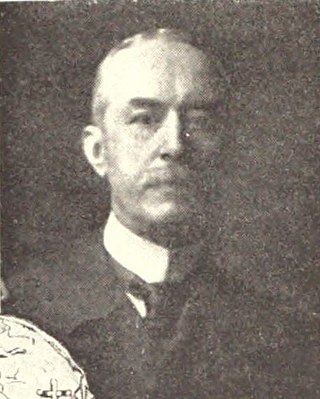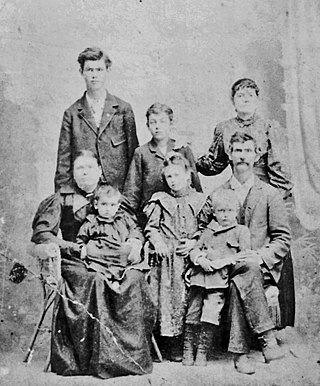
John Cleveland Robinson was an American soldier in the United States Army. Robinson had a long and distinguished military career, fighting in many wars and culminating his career as a brigadier general and brevet major general in the Union Army during the American Civil War.

Richard Conner was an American Civil War Union Army soldier who received the Medal of Honor for his bravery in action.
David Southard was a Union Army soldier during the American Civil War who received America's highest military decoration the Medal of Honor for his actions at the Battle of Sailors Creek

Thomas R. Hawkins was an African-American Union Army soldier during the American Civil War and a recipient of America's highest military decoration—the Medal of Honor—for his actions at the Battle of Chaffin's Farm.
John Henry Denig was a United States Marine Corps sergeant serving aboard the USS Brooklyn during the American Civil War. He received the Medal of Honor for his actions in 1864 during the Battle of Mobile Bay.

Hillside Cemetery is located on Mulberry Street in Middletown, New York, United States. Opened in 1861, it was designed in the rural cemetery style by Calvert Vaux and Frederick Law Olmsted, later noted for their collaboration on Central Park. There are several thousand graves, some with excellent examples of 19th-century funerary art.
John S. Lanning was a Union Navy sailor and a Medal of Honor recipient for his actions in the American Civil War. He served under the name John S. Lann.
Thomas Toohey served in the Union Army during the American Civil War. He received the Medal of Honor.

George Washington Brush was an American soldier, dentist, physician and politician. He served as a captain of a black company in the 34th Infantry Regiment U.S. Colored Troops in the Union Army during the American Civil War and received the Medal of Honor. After the war he became first a dentist and then a physician. He was elected to the New York State Assembly and then the State Senate. As chairman of the Senate Health Committee he helped establish the State Tuberculosis Sanatorium at Saranac Lake.

George Merrill was a Union Army soldier during the American Civil War. He received the Medal of Honor for gallantry during the Second Battle of Fort Fisher on January 15, 1865.

John Breckinridge Babcock was a US Army officer who received the Medal of Honor for his actions during the Indian Wars.

Archibald C. Freeman was an American soldier who received the Medal of Honor for valor during the American Civil War.
Louis G. Chaput was a Union Navy sailor in the American Civil War and a recipient of the U.S. military's highest decoration, the Medal of Honor, for his actions at the Battle of Mobile Bay.
Lieutenant Charles L. Barrell was an American soldier who fought in the American Civil War. Barrell was awarded the country's highest award for bravery during combat, the Medal of Honor, for his action near Camden, South Carolina, in April 1865.
Private Richard Beddows was a British soldier who fought in the American Civil War. Beddows was awarded the United States' highest award for bravery during combat, the Medal of Honor, for his action in Spotsylvania, Virginia during the Battle of Spotsylvania Courthouse on 18 May 1864. He was honored with the award on July 10, 1896.

Andrew Henry Embler was an officer in the Union Army during the American Civil War. He received the country's highest award for bravery during combat, the Medal of Honor, for his action during the Battle of Boydton Plank Road in Virginia on October 27, 1864. He would later serve as the Connecticut Adjutant General for two years.
Sergeant Thomas Burk was an American soldier who fought in the American Civil War. Burk received the country's highest award for bravery during combat, the Medal of Honor, for his action during the Battle of the Wilderness on 6 May 1864. He was honored with the award on 24 August 1896.
Corporal Thomas Cullen was an Irish soldier who fought in the American Civil War. Cullen received the United States' highest award for bravery during combat, the Medal of Honor, for his action at Bristoe Station in Virginia on October 14, 1863. He was honored with the award on December 1, 1864.
Thomas W. Hamilton (1833–1869) was born in 1833 in Scotland, but later moved to Weymouth, Massachusetts. Hamilton fought in the American Civil War for the Union, and was awarded the Medal of Honor for his actions while quartermaster aboard the USS Cincinnati. During the attack on the Vicksburg batteries, May 27, 1863, Hamilton, though severely wounded, returned to his post and had to be sent below.

Henry Sartwell was a sergeant in the United States Army who was awarded the Presidential Medal of Honor for gallantry during the American Civil War. Sartwell was awarded the medal on 17 November 1896 for actions performed at the Battle of Chancellorsville in Virginia on 3 May 1863.









